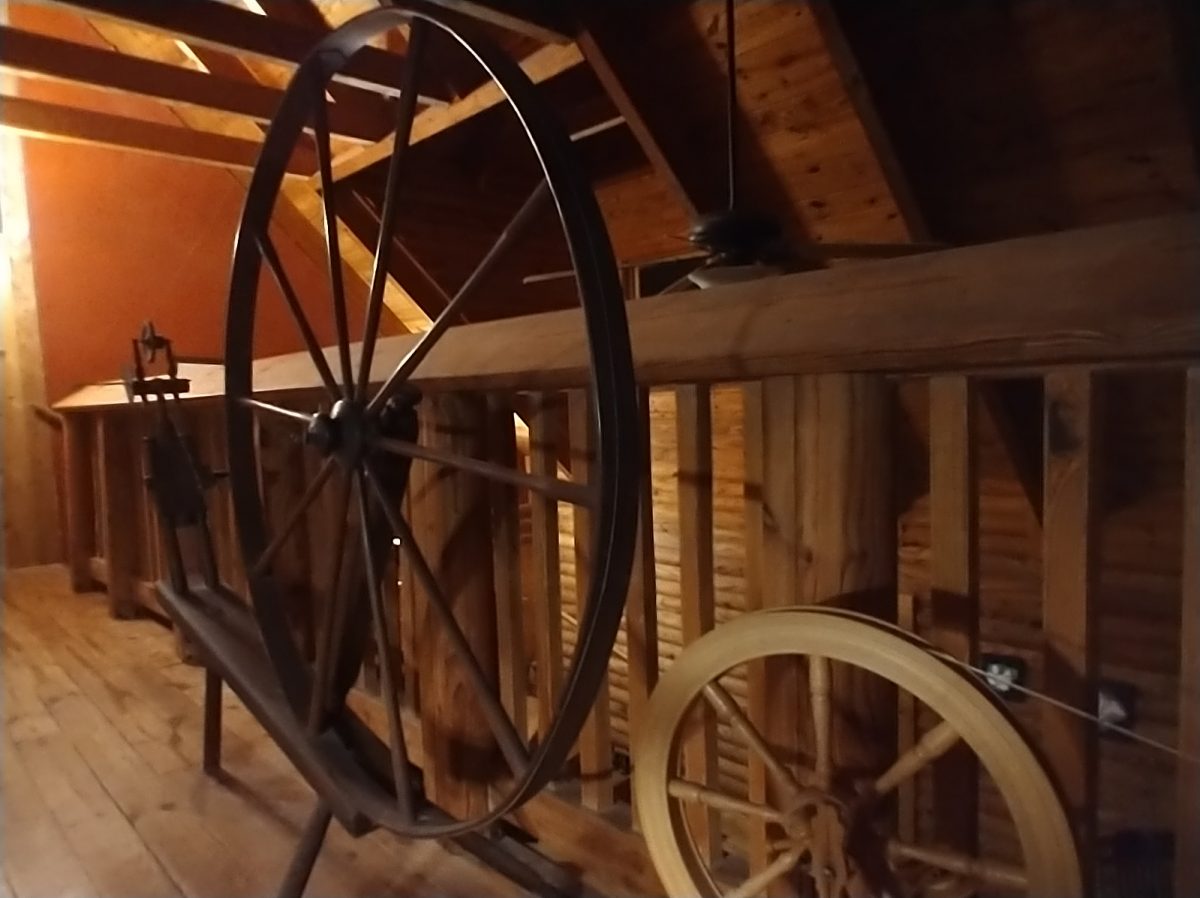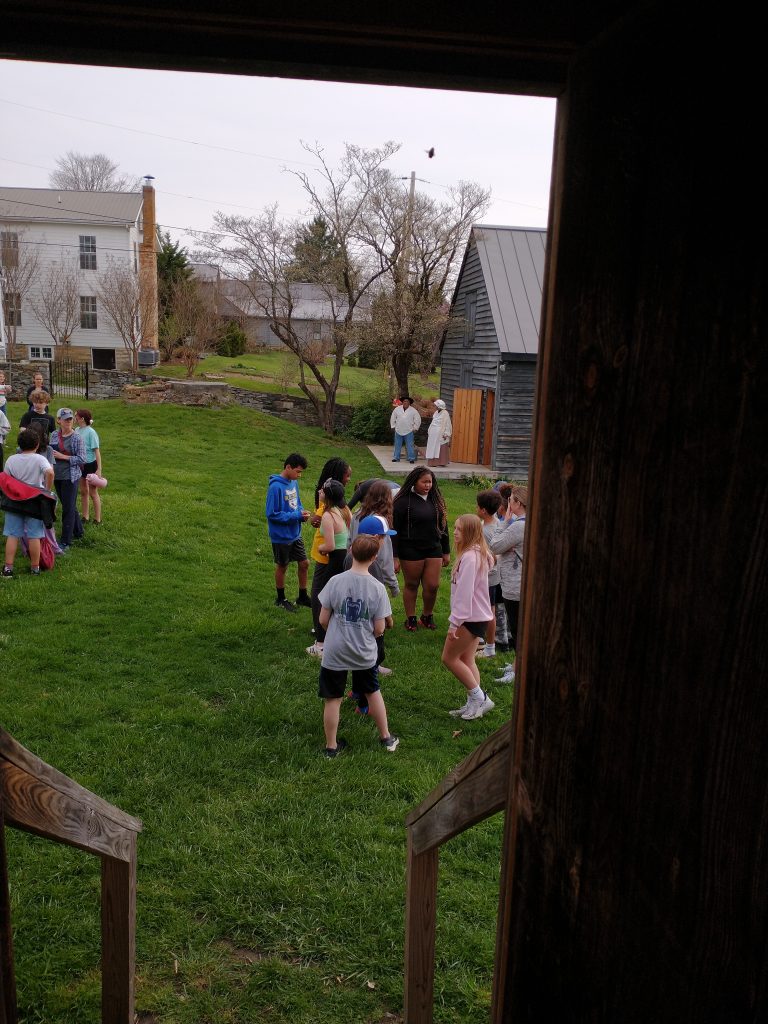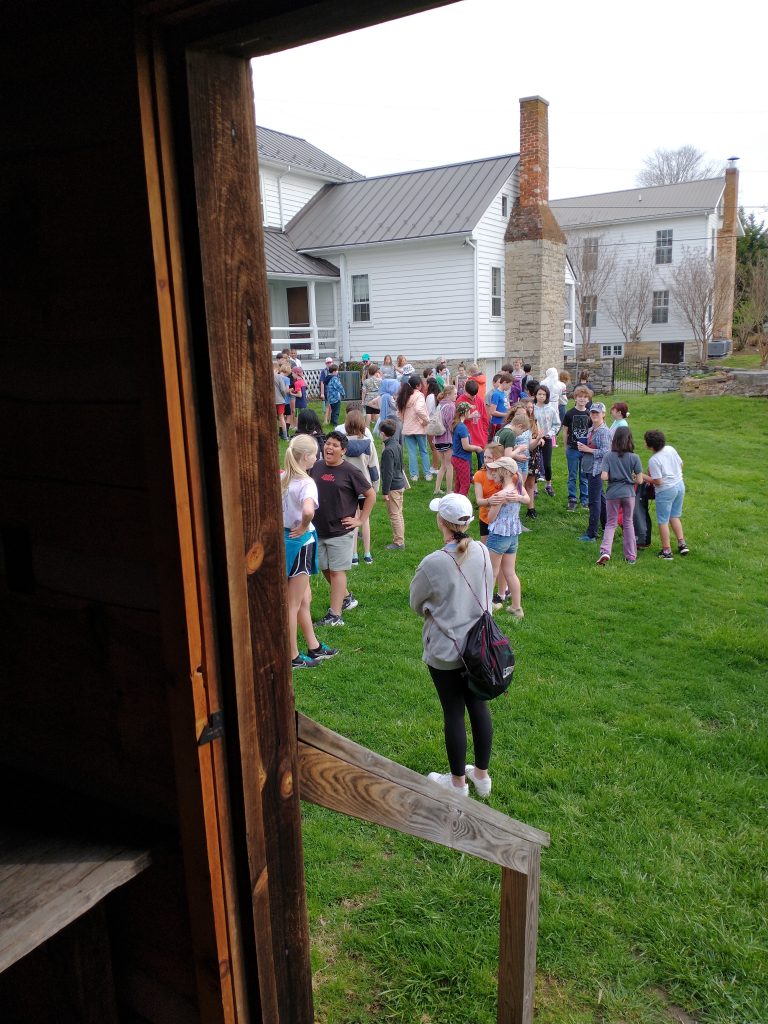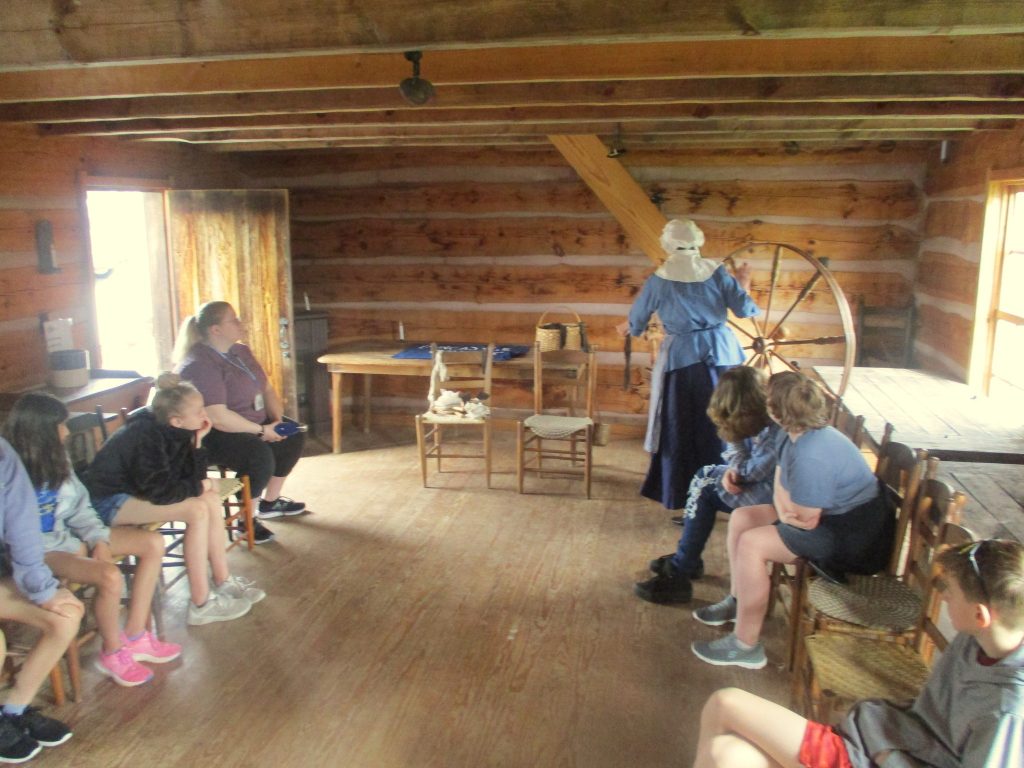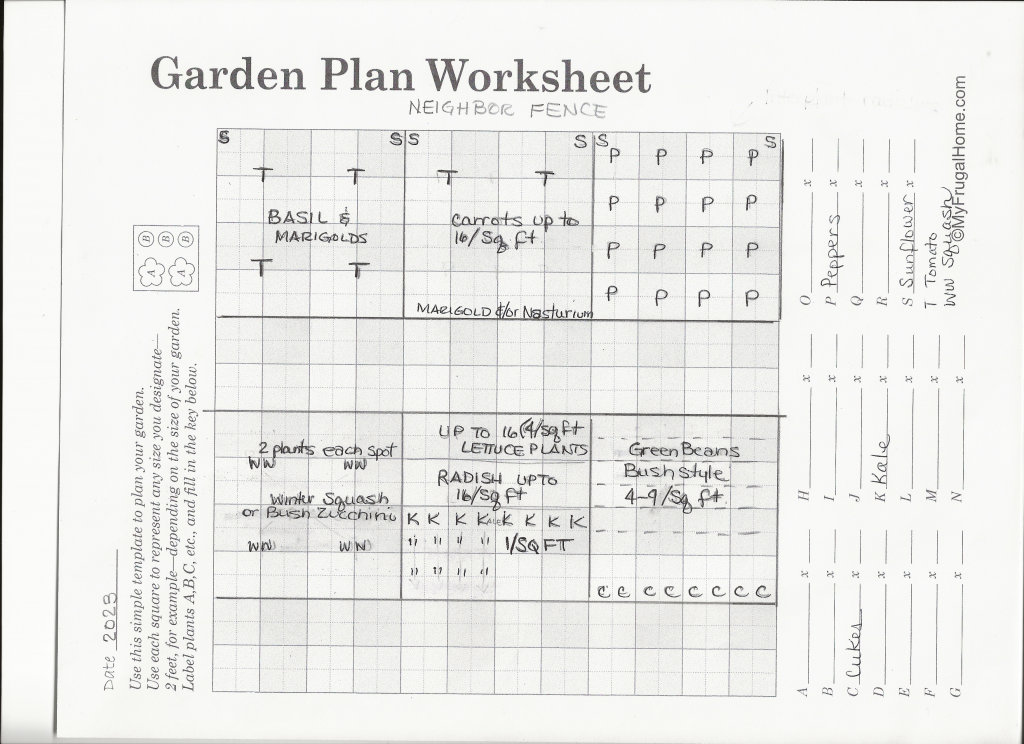Spring is always fickle, this entire winter has been though. It was subzero for a week of nights around Christmas with single digit days, and there have been weeks of late spring/early summer temperatures with nights that didn’t drop below 50f. Flowers and fruit trees bloomed early. Fearing our pear trees wouldn’t produce fruit this year because there were blooms before another week of deep freeze temperatures, as it became time for them to bloom, there were more blossoms. Three of the apple trees are blooming heavily, one lightly, one not at all. There will be no plums, it bloomed way too early and all the blossoms froze.
Seven years ago we awoke to snow. Last night we had our first frost in weeks, but today it will be 60f and by later this week, almost 80f. Friday, though the Hummingbird tracker doesn’t show them here yet, I hung my feeders and yesterday saw our first one of the season feeding on the more popular feeders.
The hens have dug out under their fence, holes filled, hay layered to fight the mud, but today with the Forsythia nearly leafed out, though there were hardly any blooms, I have again given them free range. They will hopefully hide under the foliage of the shrubs or the cedars for their safety. I hope not to lose anymore, but they can’t stay penned up in a run only slightly larger than their coop.
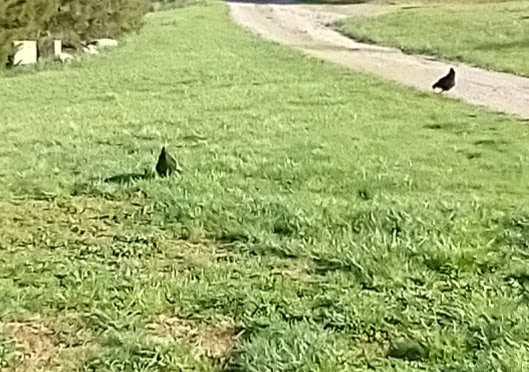
Two of the remaining Marans foraging the front yard this morning.
The yoyo weather seems to have taken a toll on the row of Nandina bushes along the north front porch. Not a single one of them retained any leaves this winter though the one in the protected breezeway nook did. If they don’t grow out new leaves, and that looks doubtful, a decision will have to be made as to how to treat that area. It is not great soil, but the Nandinas had thrived there for about 15 years until this winter. With the chickens scratching up the soil there, growing grass might be a challenge unless I can block them off until it is established. A few large pots with evergreen shrubs scattered along the edge is a possibility or even low growing evergreen juniper planted in the soil.
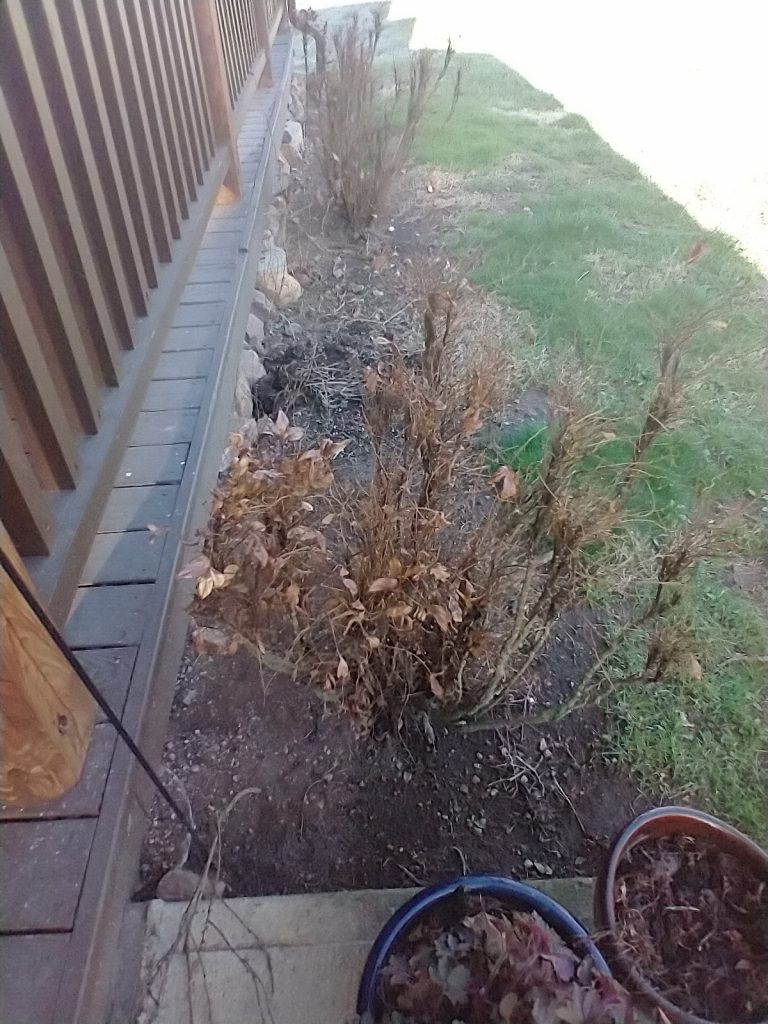
The other victim of this winter might be my fig. It produced fruit for the first time last year, but I see no sign of life in the form of new leaf buds.
This is Penny, she is a jumper, belongs to our neighbor as one of her herd, and she thinks our grass is greener than the fields on which she lives. She visits in the spring time, leaving her calf for a little while to go over the 4 strands of barbed wire to come graze. She is a welcome visitor, it amuses me to find her munching away on the tall grass that will become hay in a few months.
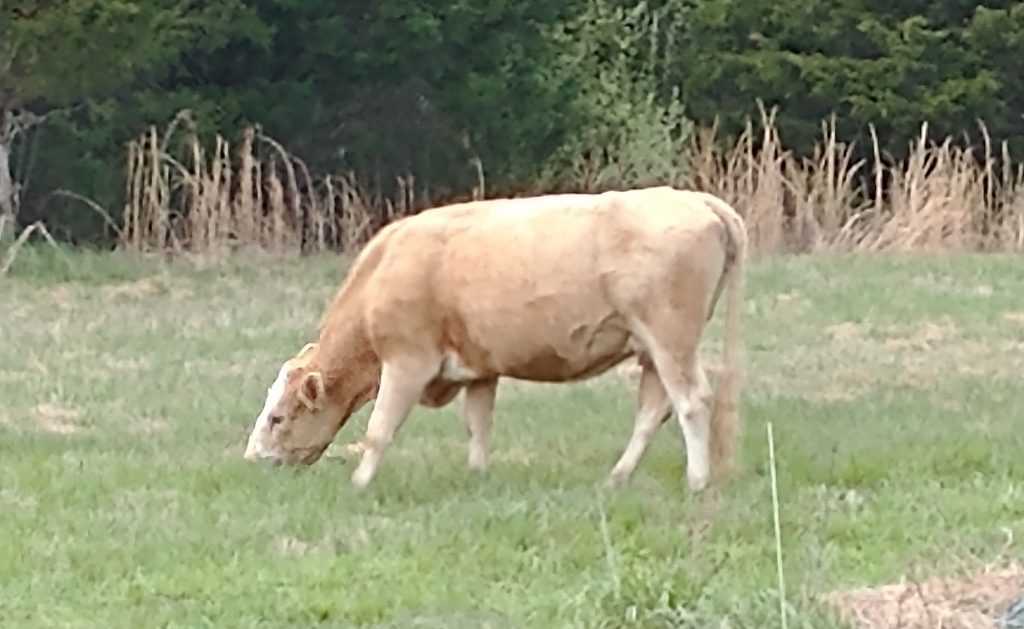
Her sister was a jumper also and used to visit, sometimes bringing friends.
The tomato, tomatillo, and 2 of the varieties of pepper starts are thriving. This week, they will begin daytimes on the back deck sheltered initially, and later full on in the sun to harden off for planting in about a month. Yet again, I seem to have started them a couple of weeks too early.
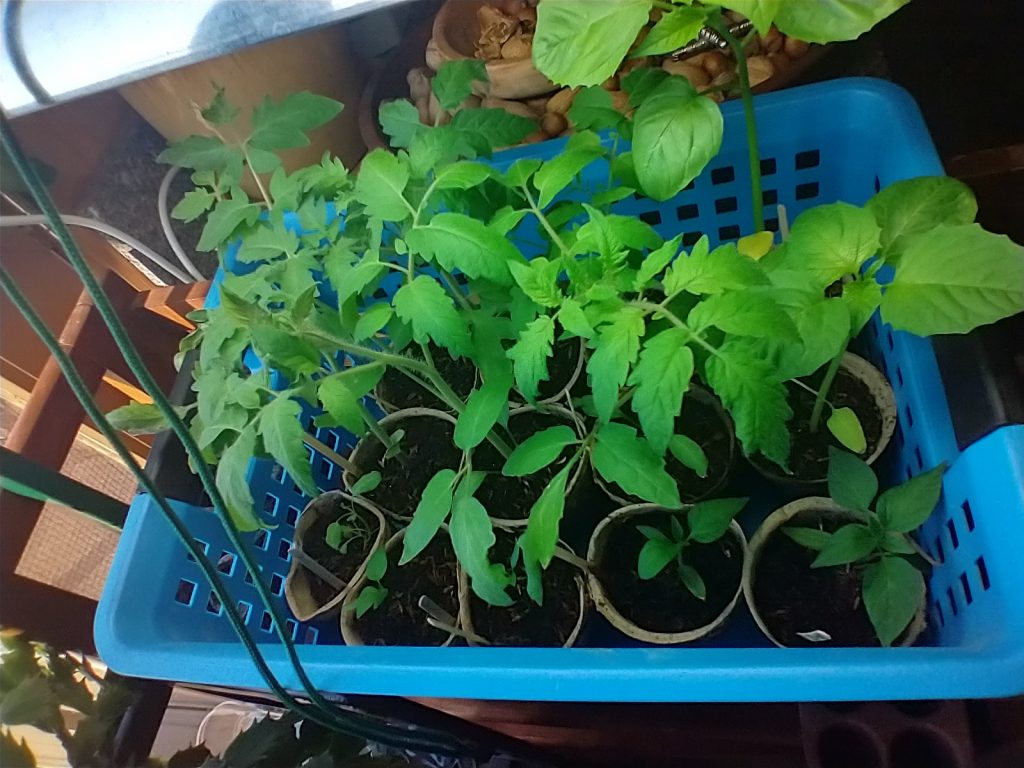
Today is Easter Sunday and when we have family here, there is usually an Easter Egg hunt for the kids, even for the teens. Last year, daughter created an escape room sort of series of clues to lead the older ones from hidden large egg with the next clue that eventually led them to small baskets of goodies, mostly of the non edible kind. This is always followed by a meal that has traditionally been ham, au gratin potatoes, asparagus, another green for the haters, deviled eggs, rolls, and some sort of dessert. This year it is just the two of us and hubby will get his favorite home cooked Mexican food fiesta instead.
Maybe tomorrow, we will venture to the plant nursery to check out the herb selection, to Tractor Supply to add wild bird feed and suet cakes and if I can find one, a third Bluebird house. My carpentry skills just aren’t up to building my own.
The peas and radishes are beginning to emerge in the garden, the lettuce in the large pot on the back deck is growing, and I await the asparagus that have yet to show in the garden. Last year about this time we added the 4 hives of bees that did not succeed. Two nuks of bees with marked queens are on order for early May and two hives will be started again, hopefully with more success. While I await their arrival, new excluders for the openings will be ordered and sugar syrup will be fed inside the hives this year. I am really raising them as pollinators and not looking for much honey, but some would be a bonus. There is one capped frame of it in the freezer that survived the demise of the last hive. I really don’t know what to do with it, it may go in one of the new hives as starter feed for them.
Spring is officially here, though the chance for a frost lingers until the first week of May.
